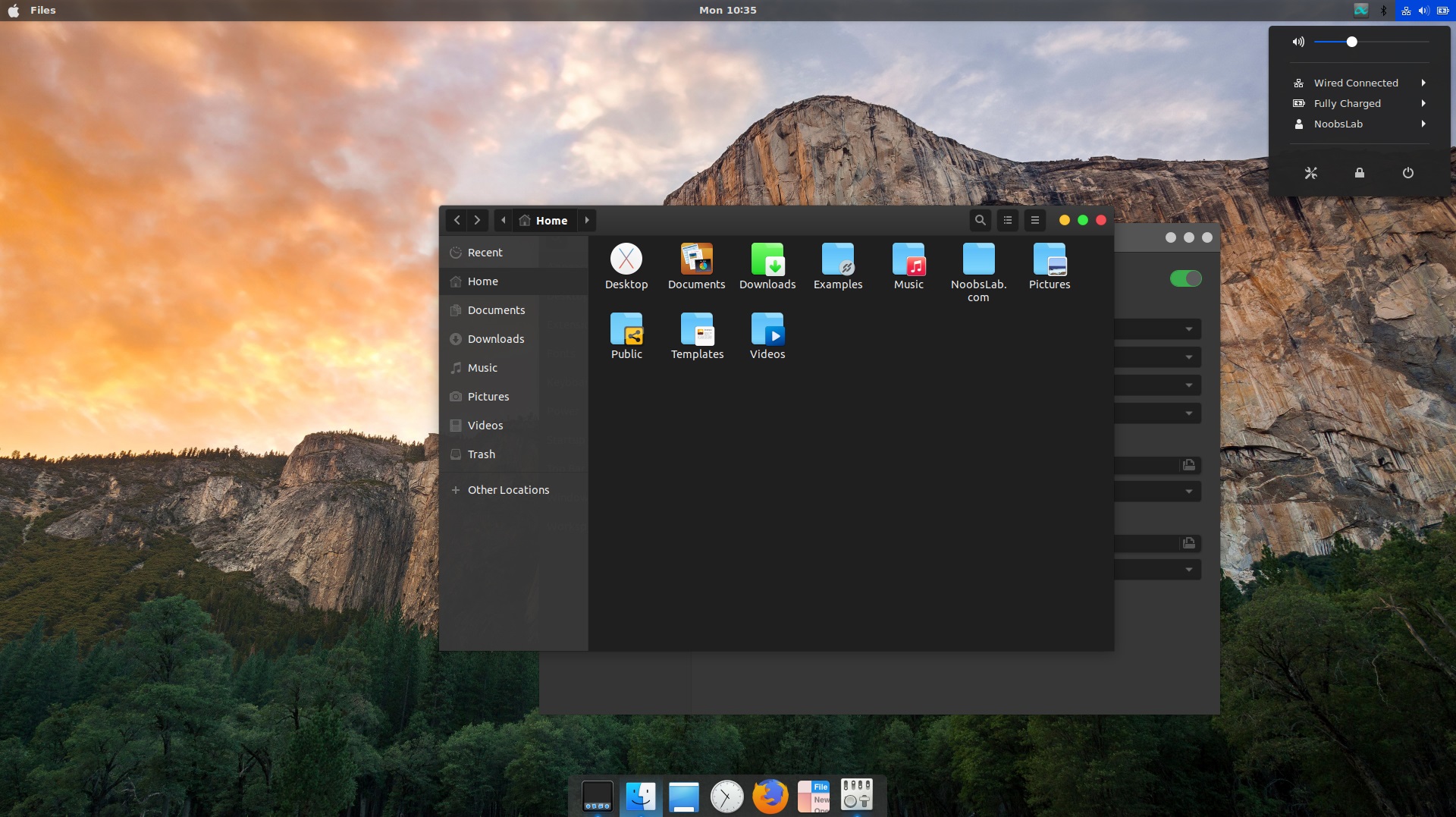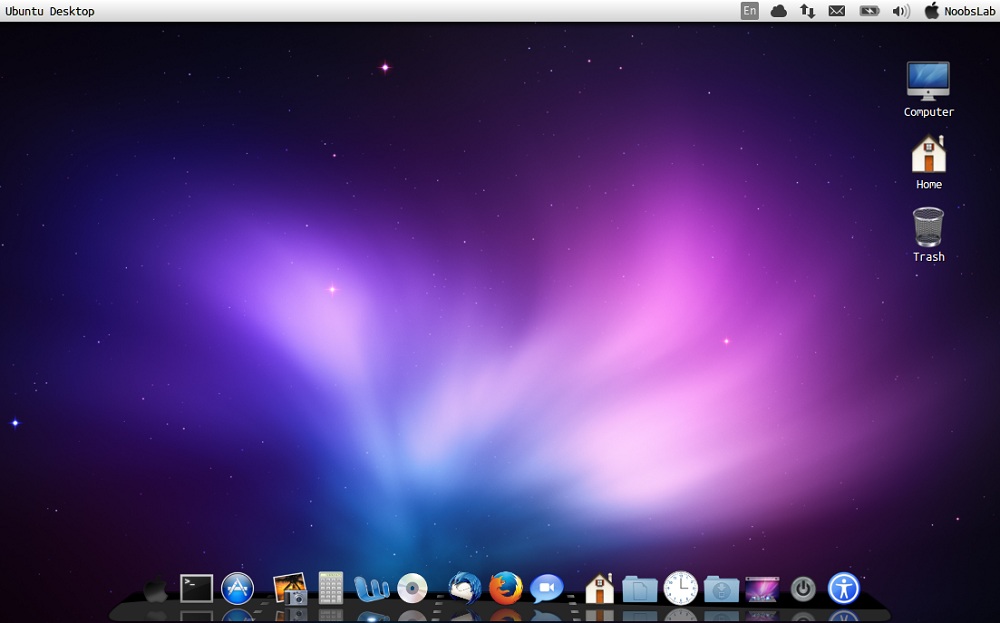Ubuntu For Mac
Best external hard drives for mac. The reason you should get a new PS4 storage with bigger size is that it can easily hold 12-15 full-sized games. Best External Hard Drive For PS4You know very well that PS4 games have large install sizes and adding more digital games from PSN or free PS Plus games will result in storage shortage and for that, you have to upgrade your storage with bigger 1TB, 2TB or even 4TB drives.Standard PlayStation HDD is mostly of the 500-gigabyte model. You know latthe est high definition games have download sizes to be between 30GB-50GB, which require plenty of storage on your PlayStation. But massive storage can also affect their performance.We have listed some standard PS4 storage drives with huge storage space and get comfortable for your online games like Destiny 2, Elder Scrolls Online. You need 8TB model if you want to quadruple the space on your PS4 and 4TB version to triple your PS4’s storage space.
The first task in installing and configuring Ubuntu on your Mac is to create a live bootable USB flash drive that contains the Ubuntu Desktop OS. Use this flash drive to not only install Ubuntu but also to confirm that Ubuntu can run on your Mac. You should be able to boot Ubuntu directly from the USB stick without having to perform an install. Virtual box is a fantastic and enterprise capable virtualizer for Mac hardware. For those not familiar with virtualizers, this tool allows you to install Ubuntu in a shared manner with another Operating System such as MacOS or Windows.
- Ubuntu For Mac Iso
- Ubuntu Bootable Usb Mac
- Download Ubuntu For Mac
- Ubuntu For Mac Book Pro
- Ubuntu For Mac Users
PowerPC (and the closely related IBM Power) is the processor architecture used in computers such as:
- Apple Macintosh (Between about 1994 and 2006)
- Some IBM servers and work stations
Genesi PegasosPPC & EFIKA systems
Games consoles such as Sony PlayStation 3
PowerPC was an officially supported architecture for Ubuntu between versions 4.10 and 6.10. From 7.04 onwards it is a community supported port.
Where to find PowerPC PowerPC downloads
The image context menu appears when you right-click (Ctrl+click on Mac) an image and contains multiple options for opening, copying, and saving the image. Opera’s zooming functionality allows you to read small fonts more easily. To zoom when using a Mac, select View Zoom In / Zoom Out. Opera for computers browser is my way to go online. It gives me a fast, secure and efficient way of browsing. It has been crafted with individuals in mind and comes with features that help me get. Opera browser for mac review. Download Opera Browser with built-in free VPN, ad blocker, social messengers, units converter, cryptojacking blocker, battery saver, VR player and much more. Download Opera Mini for Android or iOS. Data saving, video boost, ad blocker, smarter downloads, night mode and other great stuff. Need to uninstall Opera on Mac? Read this How-To guide to learn 2 ways how to remove Opera. Download free uninstaller tool App Cleaner to delete the browser. Way 1 - manual Opera uninstall guide: quit the browser and then run the Activity Monitor utility from the Launchpad. Get Opera for your operating system. The Opera browser for Windows, Mac, and Linux computers gives you the most from the Web with features that maximize your privacy, content enjoyment, and productivity.
- List of supported hardware
Apple Desktops
Apple Laptops
Installation
PowerPC FAQ
PowerPC Known Issues
PowerPC (last edited 2008-08-06 16:19:04 by localhost)
Do you want to make Ubuntu look like Mac OS X? If you do we’re going to show you how to do it, step-by-step.
The whole point of using Linux is that you can do things like this.
It doesn’t matter whether you have a bad case of Apple envy, or simply appreciate the design aesthetic of Apple’s OS; there’s nothing wrong with aping the appearance of a rival operating system.
Heck, the whole point of using Linux is that you are free to do things like this — after all, you certainly can’t make macOS look like Ubuntu!
How To Make Ubuntu Look like a Mac
A stack of mac GTK themes, icon sets, fonts and cursors are available for Linux, just a quick Google away.
The ones we include list below are the ones we use/think give you the best Mac-like look on your Linux box, but don’t be afraid to explore DeviantArt, Github and other avenues if our choices don’t suit your tastes.
1. Pick the Right Desktop Environment
GNOME Shell
To get the most Mac-like look on Linux you need to use the most appropriate desktop environment and that means you should use GNOME Shell.

That’s not a slight against other desktop environments (DEs) like Unity, Budgie, MATE or Cinnamon, as other Linux DEs can be moulded to resemble the Cupertino OS too.
But GNOME Shell is the most customisable desktop environment, which is something of a key ask in a task like this. GNOME Shell lets you theme and re-arrange everything you need to with the least amount hackery or fuss.
If you’re using Ubuntu 18.04 LTS or later you already have everything you need to get started, so feel free to skip ahead.
But if you don’t have GNOME Shell installed on Ubuntu you will need to install it first.
To make this easy you can click the button below and follow in the on-screen prompts (select ‘lightdm’ as the display manager when asked):
You’re also going to need to the GNOME Tweaks tool in a few steps time, so install that now too:
Once both installations are complete you need to logout and select the ‘GNOME Shell’ session from the Unity Greeter:
A word on using Unity
One thing GNOME Shell can’t offer, that the Unity desktop can, is global menu support.
Now, I don’t consider this to be a negative as more and more applications use use Client Side Decorations, making the need for a global menu redundant.
But if having an omnipresent set of app menus stripped across the top of the screen is part of the Mac experience you don’t wish to lose, stick with Unity.
2. Install a Mac GTK Theme
The single easiest way to make Ubuntu look like a Mac is to install a Mac GTK theme.
Our top recommendation is the ‘macOS Mojave’ theme by Vinceluice. This is a near-enough pixel-perfect clone of Apple’s OS skin, and is available in light and dark versions. It’s one of the best designed Mac GTK themes out there (it also has a matching GNOME Shell theme).
The ‘macOS Mojave’ theme requires GNOME 3.20 or later, so you’ll need to be running Ubuntu 16.10 or later to use it.
If you’re running the older Ubuntu 16.04 LTS release you can use the competent ‘macOS Sierra’ clone created by the B00merang project:
Tip: How To Install GTK Themes
Once you download your chosen macOS theme from the link(s) above, you will need to install it.
To install themes in Ubuntu first extract the contents of the archive you downloaded, then move the folder inside to the ~/.themes folder in your Home directory.
If you do not see this folder press Ctrl + H to reveal hidden folders. Next, find the .themes folder or create it if it doesn’t exist. Move the extract folder mentioned above to this folder.
Finally, to change theme, open GNOME Tweak Tool > Appearance and select your chosen theme (and the GNOME Shell theme, if you also downloaded one).
3. Install a Mac Icon Set
Next grab some a Mac Icon set for Linux. A quick Google will throw up a bunch of results. Most, sadly, aren’t complete enough to function as a full icon set, so you’ll also want to use (and in some cases manually specify) a fall back icon theme like Faba, or Papirus.
To avoid all of that hassle you may wish to use the fabulous ‘La Capitaine‘ icon pack.
What’s great about La Capitaine is that it’s a proper Linux icon set, with custom macOS inspired icons for many Linux apps and not just a direct port of mac icons to Linux. It’s also totally open-source, and is available to download from Github.
How to Install Icon Themes
Once you’ve downloaded your chosen theme from the link(s) above you need to install it. To do this first extract the contents of the archive you download, then move the folder inside to the ~/.icons folder in your Home directory.
If you don’t see this folder press Ctrl + H to view hidden folders. Next, find the .icons folder or create it if it doesn’t exist. Move the extract folder mentioned above to this folder.
Finally, to apply, open GNOME Tweak Tool > Appearance and select your chosen theme.
4. Change the System Font
If you’ve used Mac OS X / macOS at some point in the past few years you’ll know it has clean, crisp system typography.
‘Lucida Grande’ is the familiar Mac system font, though Apple uses a system font called ‘San Franciso’ in recent releases of macOS.
A quick Google should turn up plenty more information (and links to download San Francisco font) but be aware that neither font is not licensed for distribution — so we can’t link you to it, sorry!

Thankfully there’s an open-source alternative to ‘Lucida Grande’ called Garuda. It’s even pre-installed out of the box on Ubuntu, so you don’t need to go on a font safari to find it.
Ubuntu For Mac Iso
Head to GNOME Tweak Tool > Fonts and set the ‘Windows Titles’ and ‘Interface’ fonts to Garuda Regular (or any other font you wish).
If you use Unity you can use Unity Tweak Tool to change the font on Ubuntu.
Ubuntu Bootable Usb Mac
5. Add a Desktop Dock
Ask people what a Mac desktop looks like and chances are they will mention its ubiqutious desktop dock. This is a combined application launcher and window switcher.
Download Ubuntu For Mac
If you opted to use GNOME Shell back in Step 1 install the excellent Dash to Dock extension from the GNOME extensions site. This dock can be adjusted, tweaked and tune to look exactly like its macOS counterpart.
Dash to Dock doesn’t look very mac-ish by default so you will want to dive in to the GNOME Tweak Tool > Extensions > Dash to Dock > Appearance to change the colour to white, and lower the opacity.
Plank Dock
If you chose to stick with the Unity desktop you can set the Unity Launcher to hide (System Settings > Desktop > Behaviour) and install Plank, a desktop dock, to handle app launching and window switching:
Plank can be configured with all sorts of themes too, making it easy to replicate the Mac OS X experience. Gnosemite is a faithful mac Plank theme worth a look.
Ubuntu For Mac Book Pro
That’s it; we’ve achieved our aim to make Ubuntu look like a Mac — now it’s your turn.
Ubuntu For Mac Users
We’d love to see a screenshot of your mac-inspired creation so do feel free to share one in the comments.